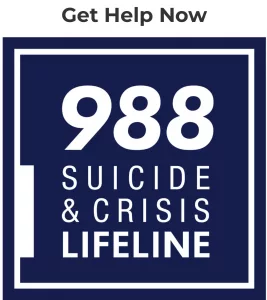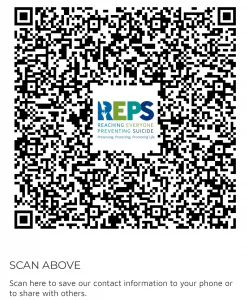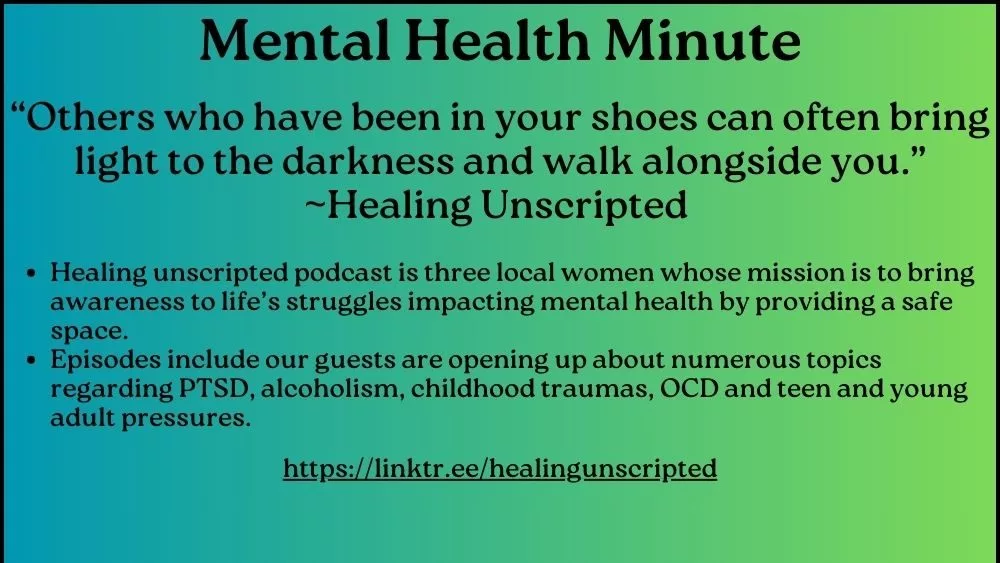
(Graphics provided to Steamboat Radio. ) This is a weekly update. Visit YampaValleyResources.org today to explore all the resources available for you and your household. Together, we are working to create a stronger, more resilient Yampa Valley where everyone has access to the resources they need to thrive.
April 20, 2025

Healing unscripted podcast is three local women whose mission is to bring awareness to life’s struggles impacting mental health by providing a safe space. Their own very different life experiences and years of recovery work and trauma healing has revealed the importance of having those tough conversations, through tears, laughter and love. Local resources and mental health representatives have willingly stepped up to share what they offer and how we can all collaborate together, empowering people to take action. In our first few episodes our guests are opening up about numerous topics regarding PTSD, alcoholism, childhood traumas, OCD and teen and young adult pressures. If you have ever experienced feelings of loneliness, confusion, guilt or shame during tough times, it is so important to surround yourself with a supportive community. Others who have been in your shoes can often bring light to the darkness and walk alongside you.
We look forward to you joining us every Sunday wherever you listen to your podcasts. https://linktr.ee/healingunscripted
April 13, 2025
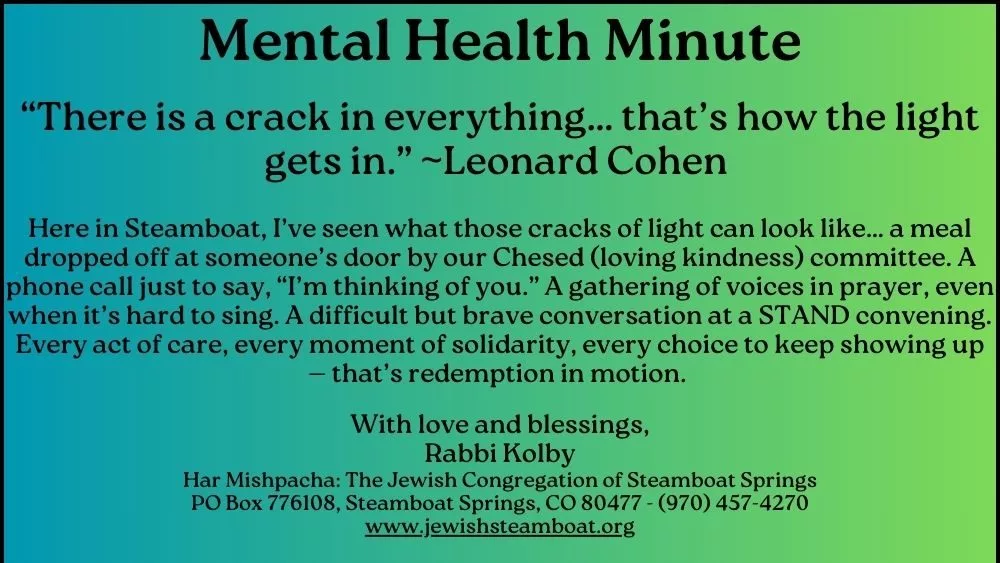
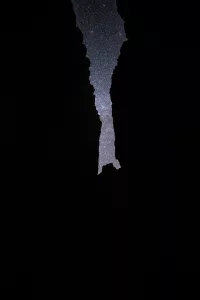
Yachatz: Cracks of Light
By Rabbi Kolby
This Saturday and Sunday evenings, Jews around the world will engage in the ritual of the Passover seder. We gather around the table, we bless the wine, we dip the greens, and then, before the meal, before the storytelling even hits full speed, we break the middle matzah.
This tradition is called: Yachatz.
A ritual, a gesture, a crack.
We haven’t left Egypt yet. We’re still in it.
Still in the narrow place.
Still surrounded by oppression, fear, uncertainty.
Still waiting.
And yet… the ritual begins. The story starts. The light starts to push through.
This year, I will hold onto Yachatz more tightly than usual.
Rabbi Shoshana Cohen teaches that through Yachatz, we pause to remember the persistence of brokenness. We crack the middle matzah in two — not because we are free, but because even in moments of stability, we carry fragments. And in moments of uncertainty, Yachatz forces us to hold the despair honestly while still reaching for redemption.
This is the sacred paradox of matzah: it is both the bread of affliction and the bread of redemption. How can it be both? Because, as Rabbi Cohen says, our redemption is actually born from affliction. Hope and resilience are born from suffering and despair. As the late Leonard Cohen wrote, “There is a crack in everything… that’s how the light gets in.”
And as Rabbi Naomi Levy reminds us in Hope Will Find You,
“Don’t search for the moments of joy. Live them. Don’t wait for the moments of pain. Accept them. Don’t anticipate the end. Discover it.”
These words echo through our Haggadah. Redemption doesn’t arrive with a trumpet blast…it begins in the quiet, in the cracks and narrow places, in the first step taken while we’re still unsure of the path.
This year, more than other years, I’m noticing the cracks and I’m yearning for the light.
Cracks in our world — the violence, the war, the polarization, the aching uncertainty and anxiety and fear so many are carrying.
Cracks in our community — the worry for mental health, the weight of losses, the economic strain, the heartbreaks that go unspoken.
Cracks in myself — the days I feel helpless and lost and where joy and grief live shoulder to shoulder.
And still, Yachatz calls us to begin.
Still, we gather.
Still, we retell our story.
Because even while we are still in Egypt, still waiting for our full liberation, something sacred stirs. The Rabbis teach that the first Seder happened while we were still in Egypt. Liberation begins in captivity. The seed of freedom is planted not on the other side of the sea, but right here — at our table, in the broken matzah, in the heart that keeps beating even when hope feels far.
That’s the power of Passover. It doesn’t just tell us a story of victory… “we were slaves and now we are free”… it roots us in a tradition of empathy. The Exodus story isn’t just a celebration; it’s a call to agency. We retell the story every year because we remember what it felt like to be there. The Torah commands: “You shall not oppress the stranger, for you were strangers in the land of Egypt.” This isn’t ancient history…it’s a present-tense moral imperative.
So, why is this Passover different from all other Passovers?
Because this year, we are tired. The brokenness feels fresh. Because this year, we are still learning how to hold despair and resilience in the same hand. Because this year, we are still daring to dream of a world more whole than the one we see around us.
Here in Steamboat, I’ve seen what those cracks of light can look like… a meal dropped off at someone’s door by our Chesed (loving kindness) committee. A phone call just to say, “I’m thinking of you.” A gathering of voices in prayer, even when it’s hard to sing. A difficult but brave conversation at a STAND convening. Every act of care, every moment of solidarity, every choice to keep showing up — that’s redemption in motion.
So I invite you this Passover to ask:
What is a crack of hope that you are holding this season? What light is trying to get in through the broken places?
As we break the matzah together, may we remember that our wholeness is not the absence of brokenness, but the holiness we find in the midst of it. May this season bring us closer…to each other, to justice, and to the sacred within and around us.
Chag Pesach Sameach…may your Passover be filled with meaning, tenderness, and just enough light to take the next step forward towards hope…
With love and blessings,
Rabbi Kolby
April 6, 2025
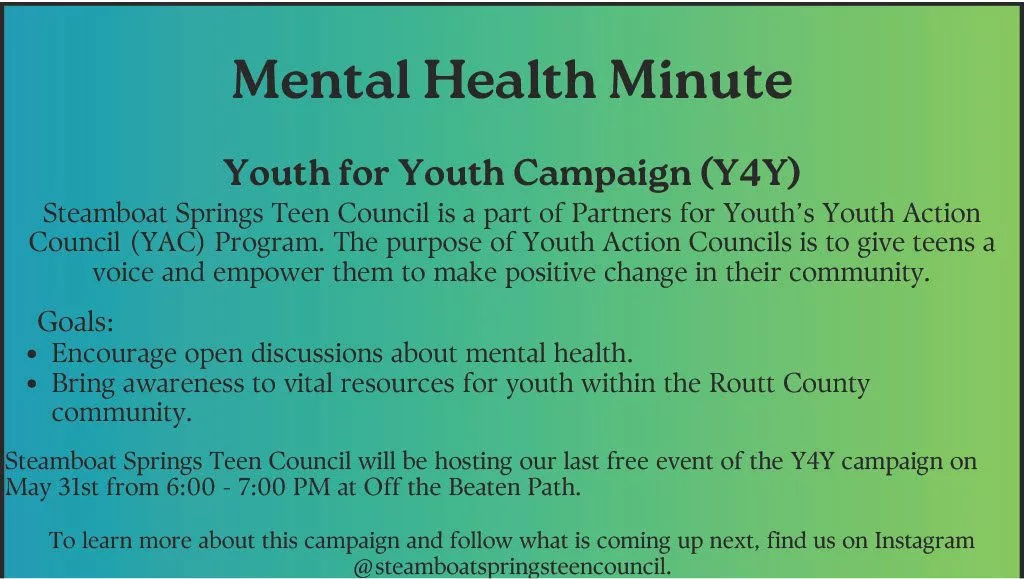
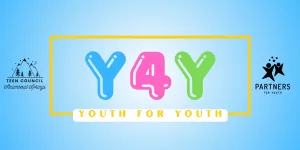
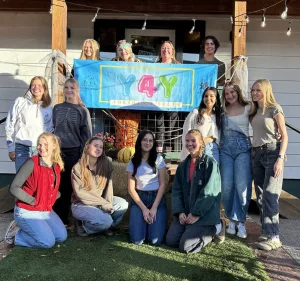
The Youth Mental Health Situation in Routt County
Routt County is situated in what is known as the “suicide belt,” a region on the Western Slope where suicide rates are significantly higher than the national average. In the past, the focus in Routt County has primarily been on providing resources for adults, often overlooking the mental health needs of youth. Over the last year, the Steamboat Springs Teen Council has shifted its focus to address this gap by highlighting essential local and statewide resources for the youth community in Routt County.
Youth for Youth Campaign
Steamboat Springs Teen Council is a part of Partners for Youth’s Youth Action Council (YAC) Program. The purpose of Youth Action Councils is to give teens a voice and empower them to make positive change in their community. The Youth for Youth (Y4Y) campaign was launched by Steamboat Springs Teen Council in July of 2024. Its goal is to encourage open discussions about mental health and bring awareness to vital resources for youth within the Routt County community.
Over the past year, the campaign has focused on a new monthly topic, covering issues such as substance misuse, the importance of connection, common mental health challenges, and other pressing concerns. To educate the community about available resources and break the stigma surrounding mental health, the Y4Y campaign created social media content and organized various free teen events. These included a harm reduction event that included naloxone training, and a yoga and sound bath session at Out Here Yoga.
Impact On the Community
One of the most impactful events organized by Steamboat Springs Teen Council was the “Boba Bash” at Causeway Coffee. The primary goal for the event was to promote connection within the youth community. The “Boba Bash” attracted close to 100 young community members and had a variety of activities for youth to engage with one another and connect in a fun and safe environment.
By partnering with local organizations such as REPS, Queer Futures, the Yampa Valley Autism Program, La Cocina, Integrated Communities, and Routt County Public Health, the Y4Y campaign has successfully established a strong presence and impact in the youth community. Our collaborations with these organizations have played a vital role in promoting mental health awareness and local resources, while fostering a culture that embraces diverse perspectives and lived experiences. Currently, the campaign is concentrating on exploring intersectionality and its connection to mental health.
Y4Y and Beyond
Steamboat Springs Teen Council will be hosting our last free event of the Y4Y campaign on May 31st from 6:00 – 7:00 PM at Off the Beaten Path, where we will unveil our mural and be focusing on our final topic, breaking the stigma. Teen Council remains committed to continuing our efforts to inspire positive change for the youth in Routt County. To learn more about this campaign and follow what is coming up next, find us on Instagram @steamboatspringsteencouncil.
March 30, 2025
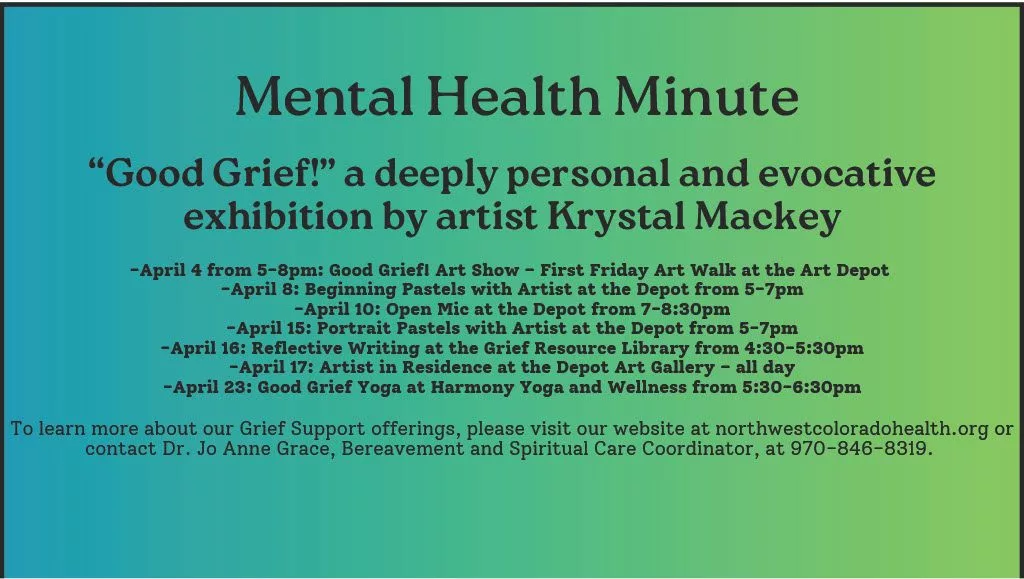
Mental Health Minute: Community Grief Support
Grief is a universal experience – at some point in life, everyone will face the pain of loss. Whether it is the death of a loved one, the end of a relationship, or a significant life change, grief is inevitable – and there is no “right” or “wrong” way to grieve. While grief is a profound and deeply personal experience, you don’t have to go through it alone. Seeking support from loved ones, support groups and professionals can help individuals process emotions, reduce feelings of isolation and provide guidance on coping strategies.
Northwest Colorado Health offers a variety of opportunities for Community Grief Support that are open to anyone who has experienced a loss. As a non-profit Hospice provider, these services are provided with grant support and community donations, in addition to the bereavement services provided to Hospice families.
- Community Grief Support Groups: meetings focus on understanding death and honoring connection with a deceased loved one while making a healthy transition into life without that person. Participants share and explore their grief in a comfortable, supportive setting among others coping with similar losses.
- Grief Resource Center: open weekly at St. Paul’s Episcopal Church Library, community members can find resources and books to support their grief journey or connect with caring bereavement volunteers.
- Counseling and Group Education: Staff help connect individuals to resources, and if needed, mental health professionals to meet their unique needs. Presentations to organizations about coping with loss and supporting co-workers through the grief process are also available.
- Youth Resiliency Program: Outreach services, support groups and education to youth who are grieving a loss related to life’s adversities.
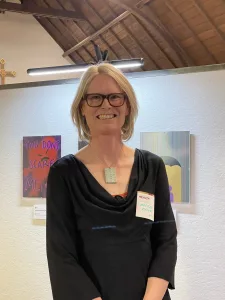
Throughout the month of April, Northwest Colorado Health’s Hospice program, in collaboration with Steamboat Creates, will be offering a variety of Community Grief events that offer healthy coping strategies and opportunities to connect with others. These will be centered around the Good Grief! Art Show, a deeply personal and evocative exhibition by artist Krystal Mackey. This collection offers a raw and intimate look at the process of grief, inviting viewers to reflect on their own experience with loss and healing. The exhibit will be on display from April 4 to April 27 at The Depot Art Center. Community members are invited to participate in the following events:
- April 4 from 5-8 p.m.: Good Grief! Art Show – First Friday Art Walk at the Art Depot
- April 8: Beginning Pastels with Artist at the Depot from 5-7 p.m.
- April 10: Open Mic at the Depot from 7-8:30 p.m.
- April 15: Portrait Pastels with Artist at the Depot from 5-7 p.m.
- April 16: Reflective Writing at the Grief Resource Library from 4:30-5:30 p.m.
- April 17: Artist in Residence at the Depot Art Gallery – all day
- April 23: Good Grief Yoga at Harmony Yoga and Wellness from 5:30-6:30 p.m.
Northwest Colorado Health is committed to providing hope and healing for community members as they navigate loss. To learn more about our Grief Support offerings, please visit our website at northwestcoloradohealth.org or contact Dr. Jo Anne Grace, Bereavement and Spiritual Care Coordinator, at 970-846-8319.
March 24, 2025
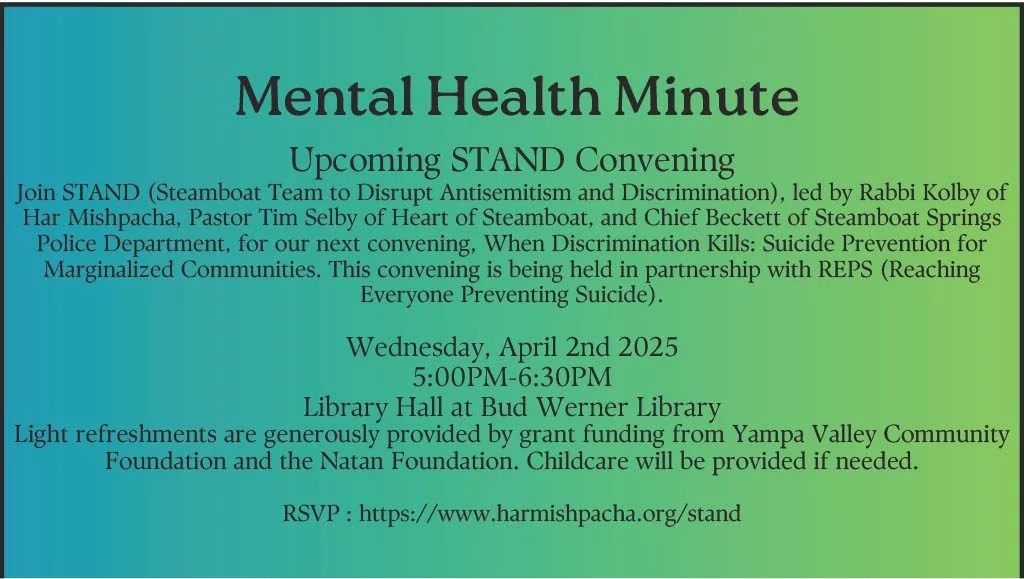
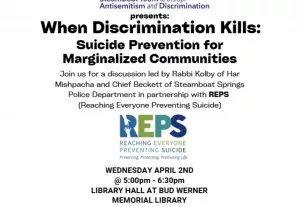
At 5 p.m. on Wednesday, April 2, STAND (Steamboat Team to Disrupt Antisemitism and Discrimination) invites the community to a vital gathering to discuss When Discrimination Kills: Suicide Prevention for Marginalized Communities. This evening will feature personal stories, educational insights, and meaningful conversation aimed at fostering dialogue and reflection on this crucial issue.
Suicide touches the lives of many, leaving deep emotional scars on individuals and communities alike. For those who are marginalized, the feelings of isolation and despair are often amplified, making these conversations even more important. While these topics are sensitive and challenging, through shared stories and mutual concern, we can find hope, healing, and a path toward greater understanding. We hope you’ll join us for this important and compassionate discussion.
~STAND (Steamboat Team to Disrupt Antisemitism and Discrimination)
March 16, 2025
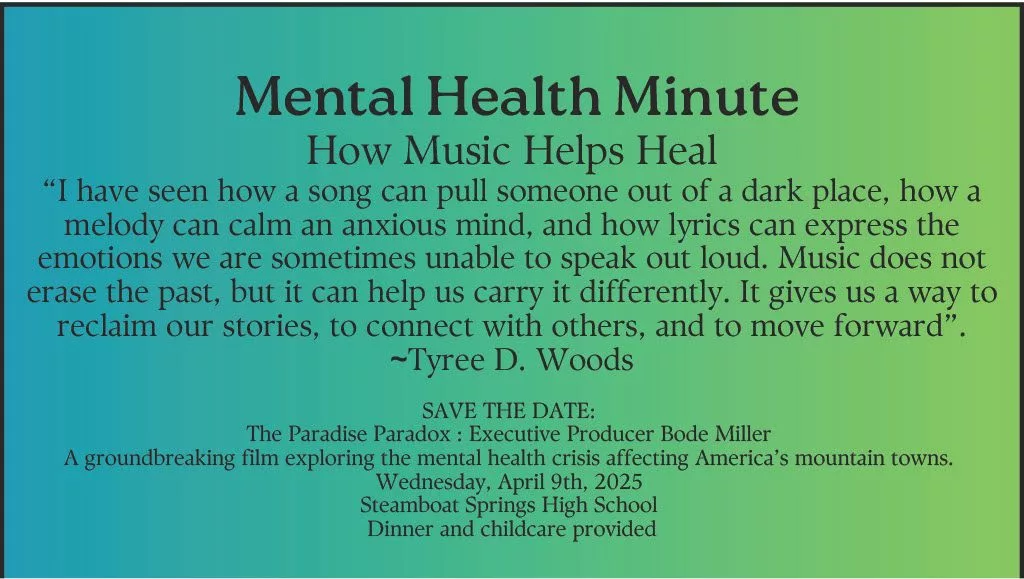
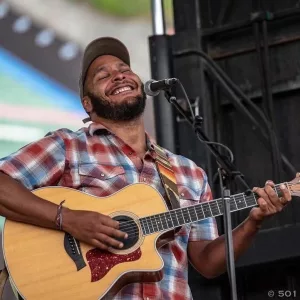
How Music Helps Heal
By Tyree D. Woods
Growing up in the Midwest, I sang in church, played instruments, and found joy in the sounds around me, but I never imagined that one day music would become my lifeline.
Leaving the military was one of the hardest things I have ever done. After serving in the Army for ten years with multiple combat tours, I returned home carrying more than just memories. The structure, the camaraderie, the sense of purpose, all of it disappeared the moment I took off the uniform. What was left was silence, and that silence was deafening. For a long time, I did not know how to talk about the weight I carried, the experiences I had, or the struggles of adjusting to civilian life. Music gave me a voice when words failed me.
I have always loved music, but I did not realize how much I needed it until I came home from combat. At first, picking up my guitar was just something to do, an escape, a distraction, but over time I saw that playing, writing, and performing was a form of healing. It was about translating emotions I did not know how to process into something tangible. It was about turning pain into art.
When you serve in the military you are surrounded by people who understand you without explanation. That kind of connection is rare outside of service, but I found it again through music. Whether I was playing solo or collaborating with others, I started to feel that same sense of belonging. Music became my new mission, one that was not just about healing myself, but about bringing people together.
I owe a lot to the local music scene in Steamboat as it has served as a springboard for my creative journey. Music is a universal language, and it has the power to build bridges in ways nothing else can. I have witnessed it bring people from all walks of life into the same space, giving them a moment of shared understanding. Whether you have been through trauma, loss, or just the everyday struggles of this complex life, music has a way of making you feel understood and brings a sense of belonging.
I believe in the power of music because I have lived it. I have seen how a song can pull someone out of a dark place, how a melody can calm an anxious mind, and how lyrics can express the emotions we are sometimes unable to speak out loud. Music does not erase the past, but it can help us carry it differently. It gives us a way to reclaim our stories, to connect with others, and to move forward.
Whether you are a veteran adjusting to civilian life, a first responder coping with traumatic memories, someone healing from loss, or just feeling lost, music is there. You do not have to be a professional musician. You do not even have to play an instrument. Just listen. Find a song that speaks to you. Let yourself feel something, and if you can, create. You might be surprised at what music can give back to you.
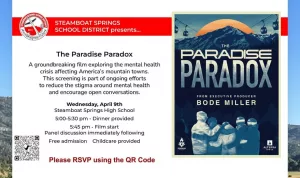
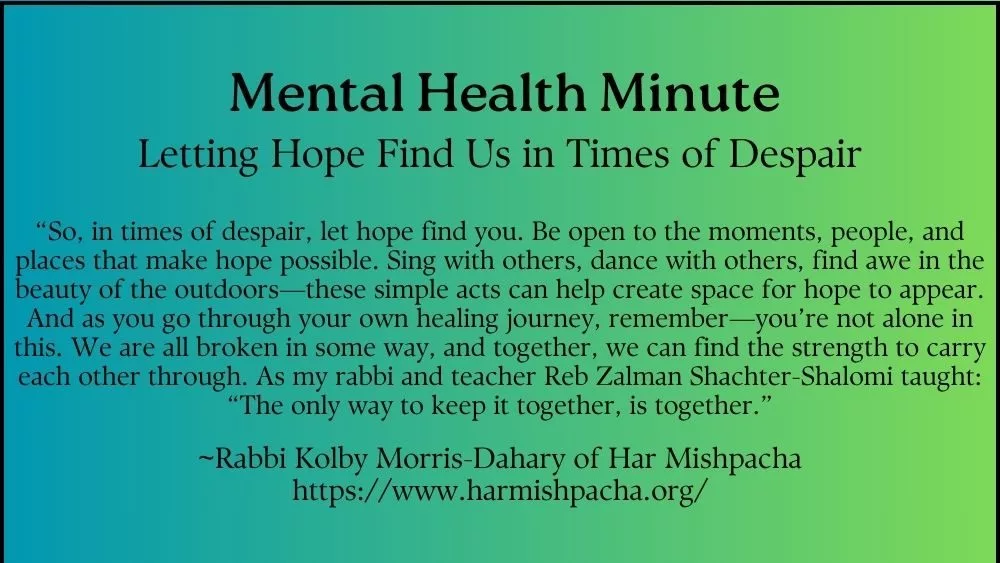
March 9, 2025.
Mental Health Minute: Letting Hope Find Us in Times of Despair
By Rabbi Kolby Morris-Dahary of Har Mishpacha
I’m no expert on dealing with pain. In fact, like many of you, I’ve spent many nights in the last few years letting my pint of Ben & Jerry’s fill to the brim with my own tears. We all experience moments of profound despair, confusion, and pain, and some days it feels like the weight of the world is simply too much to bear. But despite the heaviness, there is something to be learned, and perhaps some small inspiration to be shared, about how we can let hope find us in these dark moments.
Don’t Conceal or Destroy Your Pain
One of the first things I’ve come to realize is that we can’t simply seek to destroy, hide, or conceal our pain. Pain doesn’t go away because we ignore it or shove it into the background of our lives. In the Jewish tradition, there is a powerful Midrash about the broken tablets. After the Israelites sinned with the Golden Calf, they were given a second set of tablets, but they didn’t throw the broken ones away. Instead, they carried them alongside the complete tablets. What does this teach us? Our brokenness is part of us, and it always will be. We all have it. The more we try to avoid or hide our pain, the more it influences our lives, making it harder to heal.
When we let ourselves acknowledge the brokenness within us, we take the first step toward healing. It’s okay to be broken. We don’t need to hide it. In fact, when we face our pain and allow ourselves to be vulnerable, we create space for growth and understanding.
Be Curious About Others’ Pain
Another important lesson I’ve learned is about being curious—not about avoiding or distancing ourselves from the pain of others, but about being genuinely curious. This advice came from my mentor, who reminded me of the book What Happened to You?—a work that encourages us to understand that every person we encounter is carrying some form of pain. And it’s not just those we know personally who are hurting. It’s even the people we may see as enemies, those who fundamentally disagree with us, or perhaps even hate us. They too are carrying pain.
It’s easy to become defensive or disconnected when we face opposition, but instead of being quick to judge, we can ask ourselves: “What happened to you?” By asking this simple question and being brave enough to listen to the answer, we open the door to empathy.
Rabbi Sharon Brous teaches about something she calls “with-ness”—being with someone in their pain, not from a distance, but in a deep, meaningful, and compassionate way. When we practice with-ness, we not only help others heal, but we also find healing ourselves. There’s incredible power in listening to someone’s story, understanding their journey, and knowing that we don’t have to have all the answers to be supportive. It’s about being present, together.
Let Hope Find You
The final and most crucial piece is hope. There’s a quote from Hugo Gryn, a Holocaust survivor, that has stayed with me: “I could survive days without food or water, but I could not survive one minute without hope.” In the face of unimaginable hardship, hope was his lifeline. Hope is the thread that ties us together in our darkest times, and it’s what allows us to keep moving forward.
But here’s something that Rabbi Naomi Levy reminds us: Often, it’s not about finding hope. It’s about letting hope find you. We can’t force hope to appear, but we can place ourselves in spaces and with people who make it possible for hope to find us. Sometimes, it’s as simple as calling an old friend just to say ‘hi’, cuddling a pet, or doing something nice for someone else. These are small but profound actions that help us connect with the light in the world, even when we feel overwhelmed by darkness.
When the weight of the world seems unbearable, it’s important to remember that we can’t change everything. But we can possibly change what’s within our sphere of influence. As the saying goes, “When they go low, we go local.” There’s so much work to be done right here at home, in our community, with the people who surround us. By focusing on the small acts that make the world a better place, we can create ripples of change that spread further than we might ever imagine.
So, in times of despair, let hope find you. Be open to the moments, people, and places that make hope possible. Sing with others, dance with others, find awe in the beauty of the outdoors—these simple acts can help create space for hope to appear. And as you go through your own healing journey, remember—you’re not alone in this. We are all broken in some way, and together, we can find the strength to carry each other through. As my rabbi and teacher Reb Zalman Shachter-Shalomi taught: “The only way to keep it together, is together.”
Let hope find you. And if you ever feel like sharing a pint of Ben & Jerry’s (or just need a good conversation), I’m always up for that. Consider this an open invitation to join me—let’s share a pint and let hope find us, together.
— Rabbi Kolby Morris-Dahary of Har Mishpacha
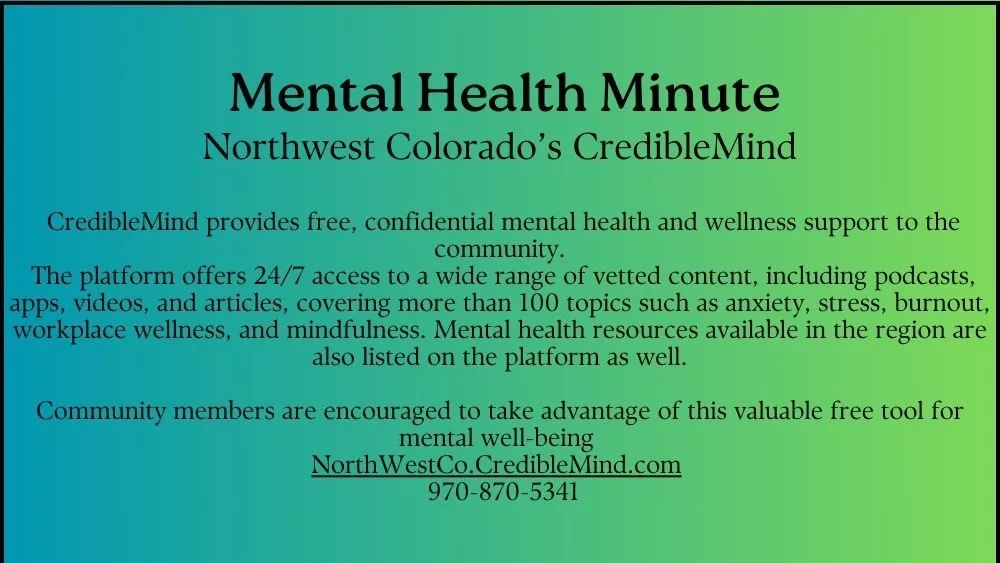
Update March 3, 2025.
Northwest Colorado’s CredibleMind Platform Proves to Be a Valuable Mental Health Resource
Routt County Public Health, in collaboration with public health agencies in Grand, Jackson, Moffat, and Rio Blanco Counties, launched CredibleMind in November 2024 to provide free, confidential mental health and wellness support to the community.
Since its launch, CredibleMind has seen strong engagement, demonstrating the need for accessible, evidence-based mental health resources. The platform offers 24/7 access to a wide range of vetted content, including podcasts, apps, videos, and articles, covering more than 100 topics such as anxiety, stress, burnout, workplace wellness, and mindfulness. Mental health resources available in the region are also listed on the platform as well.
Community members are encouraged to explore the platform at NorthWestCo.CredibleMind.com and take advantage of this valuable free tool for mental well-being.
For more information, visit CredibleMind’s “About” page or contact Routt County Public Health at 970-870-5341.
Routt, Grand, Jackson, Moffat, and Rio Blanco County Public Health
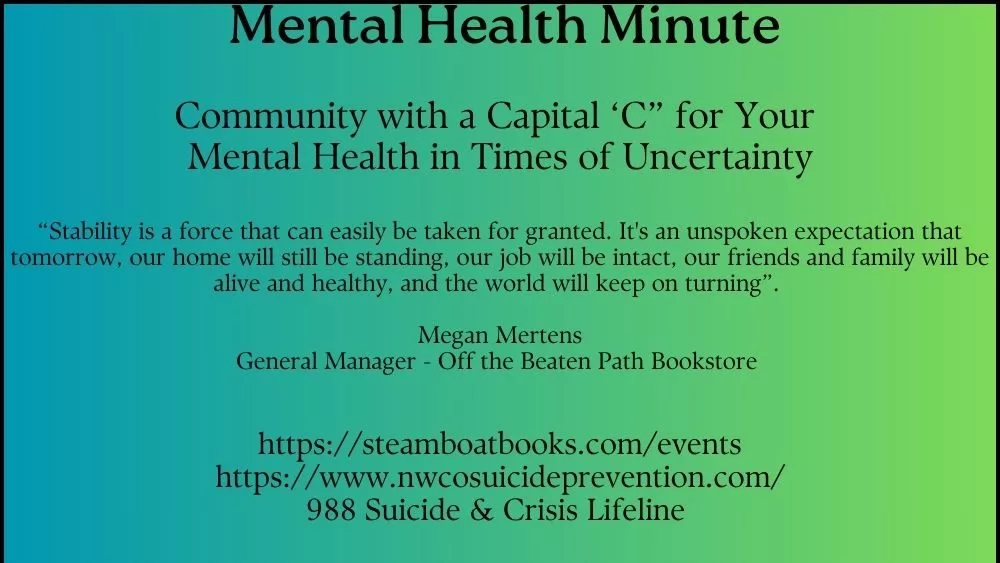
Update Feb. 23, 2025.
Mental Health in Times of Uncertainty
Stability is a force that can easily be taken for granted. It’s an unspoken expectation that tomorrow, our home will still be standing, our job will be intact, our friends and family will be alive and healthy, and the world will keep on turning. So far it feels like 2025 has turned all those expectations on their heads, creating an atmosphere of anxiety and uncertainty about what the future may hold. How do you keep going when just turning on the TV is enough to send you into an existential crisis?
There’s a lot of chatter going on right now about how important it is in times like these to invest in your Community, with a capital C. I have had the privilege of working at Off the Beaten Path Bookstore for about eight years now, and every day I am blessed to be able to witness the power of Community with a capital C. I’m also reminded daily that building such a community does not happen overnight, nor does it come without some sweat equity.
A few months ago, I picked up the book The Great Good Place by Ray Oldenburg, a fantastic thesis on the importance of what Oldenburg coined Third Places. That put me on a journey through several other books about community and third places, such as Unreasonable Hospitality by Will Guidara and Finding Your Third Place by Richard Kyte, all of which share a similar idea – it is essential to people’s well-being that they have a place where they feel they belong, without expectation or judgement, that’s not their place of employment or their home. Third places are so valuable, in fact, that in 2023 when the Attorney General released an advisory on America’s loneliness epidemic, they were specifically mentioned as important places for refuge and connection (check out the full advisory here). For some it’s a bar (“Where Everybody Knows Your Name”), for some a favorite coffee shop, for others the library, and for many, of course, the local bookstore.
As important as it is to have these spaces available, it’s equally important that a certain amount of buy-in is demonstrated by both the employees and the patrons of such an establishment. A bookstore cannot live on bread alone. The beautiful part about investing in your Community (with a capital C) is that the more you put into it, the more you get out of it. It’s when one of our regulars brings the staff cookies for Christmas. It’s when a friend of the store offers to shovel our sidewalk on a particularly snowy morning. It’s when we throw an extra cookie in the bag of the person who told us they’re having a rough day. It’s when we offer a hug and a shoulder to cry on for our neighbors whose business will be shuttered for the foreseeable future or hear the news of the loss of a beloved community member. It’s when we band together to deliver meals to a coworker in need. It’s when someone brings us a piece of art for our walls. It’s a million little moments that, when put together, paint a bigger picture: we are here for each other.
If you, like me, are finding the news of the world overwhelming, I want you to consider how you’ve been prioritizing your capital C community. If you find that it’s not much of a priority at all, I have good news – small gestures that show you care are the first step. Smile at your cashier. Ask your friend how they’re doing (and really mean it). Make time for that catch-up cup of coffee. Be curious, be kind, and look for opportunities for compassion and connection. You might be surprised at the results.
Want some ideas on how to build your Community? Off the Beaten Path Bookstore has events happening all the time, from author events to Dungeons and Dragons to book release parties, and we even have author Richard Kyte himself coming this summer to talk about how to find your third place! Dusky Grouse Coffee is another great community-oriented space, offering several mental health support groups each month. Bud Werner Library not only has great (free!) author events, they also host documentary showings, book clubs, genealogy groups, and more. Need more ideas? Check out the Community Corner of our New Release room next time you’re at the bookstore for details on community groups and other volunteer opportunities.
With Love,
Megan Mertens
General Manager – Off the Beaten Path Bookstore
Update Feb. 16, 2025.
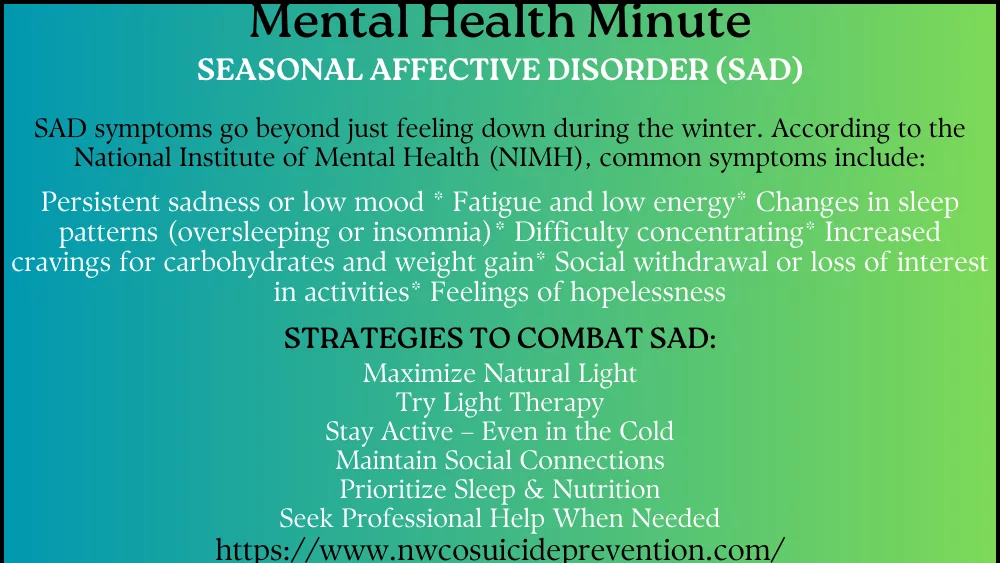
Seasonal Affective Disorder: Coping with Winter in Steamboat Springs, Colorado
By: Mindy Marriott
For many, winter in Steamboat Springs, Colorado is a time of breathtaking beauty, world-class skiing, and cozy evenings by the fire. But for some, the long, cold months bring more than just a case of the winter blues. Seasonal Affective Disorder (SAD), a type of depression that occurs during seasonal changes, affects millions of people each year—especially those living in high-altitude, snow-covered regions like Steamboat. With limited daylight, extreme temperatures, and geographic isolation, managing mental health during the winter is crucial.
Steamboat Springs sits at an elevation of 6,732 feet in the Rocky Mountains, with an average snowfall of 314 inches per year—more than 26 feet. While this makes it a paradise for winter sports enthusiasts, it also presents challenges for those struggling with SAD.
- Shorter Days: During the winter solstice, Steamboat gets only about 9 hours and 20 minutes of daylight, compared to over 15 hours in the summer. Reduced sunlight exposure can disrupt circadian rhythms and lower serotonin levels, contributing to SAD symptoms.
- Cold Temperatures: Average winter lows dip to single digits, making it difficult to spend extended time outdoors. Frigid conditions discourage outdoor activities, reducing exposure to natural light, which is crucial for mood regulation.
- Storms & Isolation: Heavy snowfall can make roads treacherous, limiting social interaction and increasing feelings of isolation. In a town with a small, spread-out population of about 13,000 residents, this isolation can feel even more pronounced.
SAD symptoms go beyond just feeling down during the winter. According to the National Institute of Mental Health (NIMH), common symptoms include:
- Persistent sadness or low mood
- Fatigue and low energy
- Changes in sleep patterns (oversleeping or insomnia)
- Difficulty concentrating
- Increased cravings for carbohydrates and weight gain
- Social withdrawal or loss of interest in activities
- Feelings of hopelessness
If these symptoms last for more than two weeks and begin to interfere with daily life, it’s important to seek support.
- Maximize Natural Light
Steamboat is known for its frequent “bluebird” days—sunny skies following snowstorms. Taking advantage of natural light is essential.
- Open curtains and blinds during the day to let in sunlight.
- Arrange workspaces and seating areas near windows.
- Get outside for even a short walk during daylight hours, preferably in the morning.
- Try Light Therapy
- A light therapy box that mimics natural sunlight can help regulate your circadian rhythm and improve mood.
- Experts recommend using a 10,000-lux light box for 20-30 minutes each morning.
- Stay Active – Even in the Cold
- Engage in outdoor activities like skiing, snowshoeing, or ice skating to boost endorphins.
- On bitterly cold days, opt for indoor exercise like yoga, strength training, or treadmill walking.
- Steamboat offers plenty of indoor fitness options, including Old Town Hot Springs and local gyms.
- Maintain Social Connections
- Steamboat’s tight-knit community can be an asset—stay engaged through social events, clubs, or volunteering.
- If travel is limited, set up virtual check-ins with friends and family.
- REPS (Reaching Everyone Preventing Suicide) provides community support and resources for those struggling with mental health.
- Prioritize Sleep & Nutrition
- Keep a consistent sleep schedule by going to bed and waking up at the same time each day.
- Eat a balanced diet rich in vitamin D (found in fish, dairy, and fortified foods) to help combat deficiencies linked to SAD.
- Seek Professional Help When Needed
- If SAD symptoms persist, therapy, counseling, or medication may be beneficial.
- Local mental health resources, including REPS and Mind Springs Health, offer support in Steamboat Springs.
Living in a mountain town like Steamboat Springs has its perks—stunning scenery, fresh mountain air, and endless outdoor adventures. But the long winters can take a toll on mental well-being. By taking proactive steps like maximizing sunlight exposure, staying active, and maintaining social connections, residents can enjoy winter while managing the effects of Seasonal Affective Disorder.
If you or someone you know is struggling with SAD, don’t hesitate to reach out for support. Resources like REPS are available to help, ensuring that no one has to face the winter months alone.
Mindy Marriott is the Executive Director of Reaching Everyone Preventing Suicide
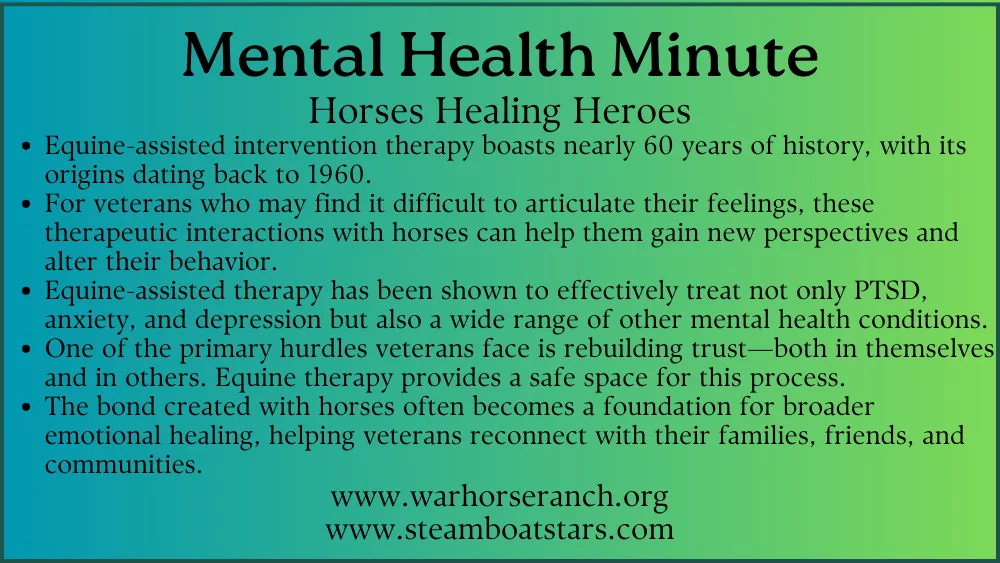
Update on Feb. 9, 2025.
The Transformative Power of Equine Therapy for Veterans Facing PTSD, Anxiety, and Depression
For veterans returning from service, the transition to civilian life can be fraught with invisible battles. Post-Traumatic Stress Disorder (PTSD), anxiety, and depression are common mental health challenges, often stemming from the traumas of combat and military life. While traditional therapies such as counseling and medication are invaluable, equine-assisted intervention therapy has emerged as a powerful complementary approach with a proven history of success.
A Proven Modality with Deep Roots
Equine-assisted intervention therapy boasts nearly 60 years of history, with its origins dating back to 1960. Over six decades of research have demonstrated its significant positive impact on various psychotherapy patients (Li & & Sánchez-García, 2023). Initially used in physical rehabilitation and developmental therapies, equine-assisted therapy (EAT) has evolved into a novel auxiliary treatment method for a wide range of mental health conditions. Veterans struggling with PTSD, anxiety, and depression have found equine therapy particularly effective in fostering emotional resilience and healing.
Why Horses Make Ideal Therapeutic Partners
Horses are highly intuitive animals, responding to human emotions and nonverbal cues with remarkable sensitivity. This ability allows them to act as mirrors, reflecting the emotional states of those around them. For veterans who may find it difficult to articulate their feelings, these therapeutic interactions with horses can help them gain new perspectives and alter their behavior. The presence of a horse serves as a catalyst for the emergence of new ideas and emotions, facilitating breakthroughs that might be difficult to achieve through traditional talk therapy alone.
The benefits of equine therapy extend beyond emotional insights. Interaction with horses promotes the development of nonverbal communication skills, an essential component for veterans who may struggle to express themselves verbally. Moreover, studies have shown that spending time with horses can lead to measurable physical benefits, including reduced blood pressure, lower heart rates, and decreased anxiety levels.
Healing Through Connection and Trust
One of the primary hurdles veterans face is rebuilding trust—both in themselves and in others. Equine therapy provides a safe space for this process. Horses, being non-judgmental and living entirely in the moment, require calm, consistent leadership. Veterans quickly learn that to gain a horse’s trust, they must regulate their own emotions and behavior. This process not only fosters a sense of control and self-awareness but also mirrors the interpersonal skills necessary for healthy relationships outside the therapeutic setting.
Through grooming, leading, and being in their presence, veterans build a connection based on mutual respect and trust. This bond often becomes a foundation for broader emotional healing, helping veterans reconnect with their families, friends, and communities.
Wide-Ranging Mental Health Benefits
Equine-assisted therapy has been shown to effectively treat not only PTSD, anxiety, and depression but also a wide range of other mental health conditions. Research indicates its efficacy in addressing attention deficit/hyperactivity disorder (ADHD), conduct disorder, dissociative disorders, Alzheimer’s disease, dementia, autism, and various other chronic mental illnesses (Li & & Sánchez-García, 2023). This versatility highlights the profound impact that equine therapy can have across different populations, with veterans benefiting significantly from its holistic approach.
Building Community and Purpose
Beyond the individual benefits, equine therapy can often take place in group settings, fostering a sense of camaraderie among veterans. Sharing the therapeutic journey with peers who understand the unique challenges of military life can be incredibly validating and supportive. Additionally, the act of caring for another living being provides veterans with a renewed sense of purpose, which is often missing after leaving the structured environment of military service.
A Path to Empowerment and Healing
Equine therapy offers veterans more than symptom relief—it provides a path to empowerment. By engaging with horses, veterans learn to navigate their emotional landscapes, build resilience, and regain control over their lives. The lessons learned in the arena often extend far beyond the ranch, equipping veterans with the tools they need to lead fulfilling, empowered lives.
For veterans battling PTSD, anxiety, and depression, equine therapy offers a transformative journey toward healing—one step, one breath, and one hoofbeat at a time.
Li, J., & Sánchez-García, R. (2023). Equine-assisted interventions for veterans with posttraumatic stress disorder: a systematic review. Frontiers in psychiatry, 14, 1277338. https://doi.org/10.3389/fpsyt.2023.1277338
Valery Lozano, MSFP, LPCC
Warhorse Ranch
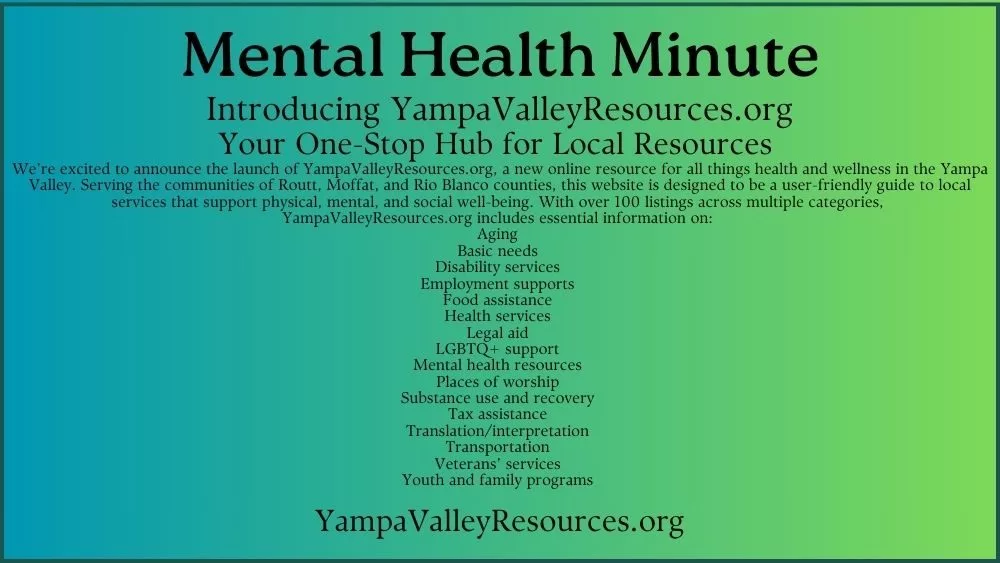
Updated Feb. 2, 2025.
In 2022, the Yampa Valley Well-being Consortium set out to move an idea forward in line with its purpose to work collectively to improve health and well-being systems and decrease health disparities in the Yampa Valley. The consortium’s steering committee, which includes representatives from The Health Partnership, Northwest Colorado Health, UC Health, Routt County Public Health, Memorial Regional Health, REPS, Integrated Community, Mind Springs Health, and the Steamboat Springs Chamber, recognized the need for a centralized hub to connect local residents with essential resources. This hub would need to serve everyone including community members, healthcare providers, local organizations and more. The vision became clear: a comprehensive, easy-to-navigate website offering a wide range of health and wellness resources for the entire region.
The Health Partnership is excited to announce the launch of YampaValleyResources.org – your one-stop hub for local health and wellness resources throughout Routt, Moffat and Rio Blanco counties. Whether you’re looking for help with housing, searching for employment support, or seeking mental health care, this website provides an organized, central location for finding the resources you need. Plus, if you offer a local service, you can submit your own listing to be included on the site. In addition to the English version, we are also excited to announce that a Spanish version of the website is coming soon, ensuring that even more people in our community have easy access to essential resources.
Visit YampaValleyResources.org today to explore all the resources available for you and your household. Together, we are working to create a stronger, more resilient Yampa Valley where everyone has access to the resources they need to thrive.
Emily Schweitzer
Regional Health Connector
The Health Partnership
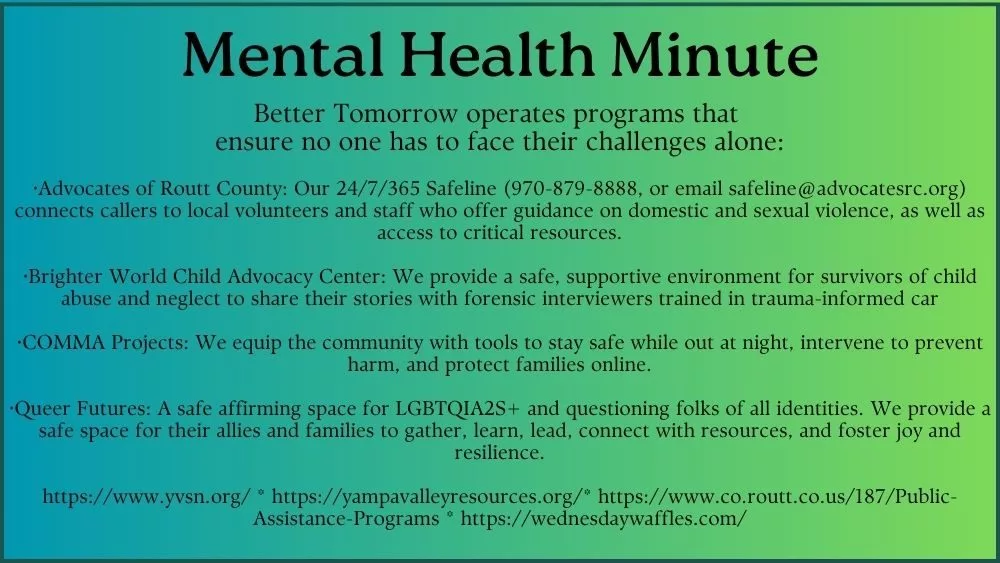
Updated Jan. 27, 2025.
In the 90s, my high school invited speakers who were making an impact in their communities to share their stories with students. Today, they continue this tradition, calling it “Solidarity Week.”
Back then, we had a wide variety of speakers: the coroner would shock us with graphic slideshows to discourage drunk driving; A paraplegic wrestler would inspire us with his determination and success; and believe it or not, a pimp-turned-preacher took the stage to share his story of personal redemption.
I still wonder what it must have been like when the leaders at this Jesuit institution decided to invite someone from a local “LGB” resource center. Their visit sparked my interest, and I came home eager to talk to my parents about joining the center as an ally — to show my peers they weren’t alone, that I saw and supported them.
But I never made it. My parents, fearful that people would assume I was gay, discouraged me from going (if not outright banning it). I didn’t have the courage to follow through. I stayed away, and to this day count it as one of my deepest regrets.
For some people, simply knowing they’re seen and supported can make all the difference. Showing up as a friend, listening even when you don’t have the answers – sometimes, that’s enough.
But when listening isn’t enough, there are people in this community who have the courage to provide more.
| Better Tomorrow operates programs that ensure no one has to face their challenges alone:
· Advocates of Routt County: Our 24/7/365 Safeline (970-879-8888, or email safeline@advocatesrc.org) connects callers to local volunteers and staff who offer guidance on domestic and sexual violence, as well as access to critical resources. · Brighter World Child Advocacy Center: We provide a safe, supportive environment for survivors of child abuse and neglect to share their stories with forensic interviewers trained in trauma-informed care. · COMMA Projects: We equip the community with tools to stay safe while out at night, intervene to prevent harm, and protect families online. · Queer Futures: A safe affirming space for LGBTQIA2S+ and questioning folks of all identities. We provide a safe space for their allies and families to gather, learn, lead, connect with resources, and foster joy and resilience. |
Each Better Tomorrow program connects individuals to mental health providers who are trained to meet the unique needs of every client. We also offer financial assistance to ensure equitable access to these resources, because no one should be held back by cost when seeking help.
If you have questions, need support, or want to share your experiences, please reach out. We are here to listen and to help you identify the resources you need most.
And if you’re inspired to show solidarity or support our programs, let us know. Volunteer opportunities may not always be available, but there are countless ways to learn, engage, and prepare yourself to stand up when it matters most.
There are many ways to be of service in our community, and few things are more fulfilling. When the call comes or inspiration strikes, show up for your community in meaningful ways. Let them know they’re not alone. Reconnect with someone who might need it. By engaging, you’ll help create a safer, more connected environment for everyone—and you might just discover the deep personal fulfillment that comes from a life of service.
Mark Fitzgerald
Executive Director
Better Tomorrow
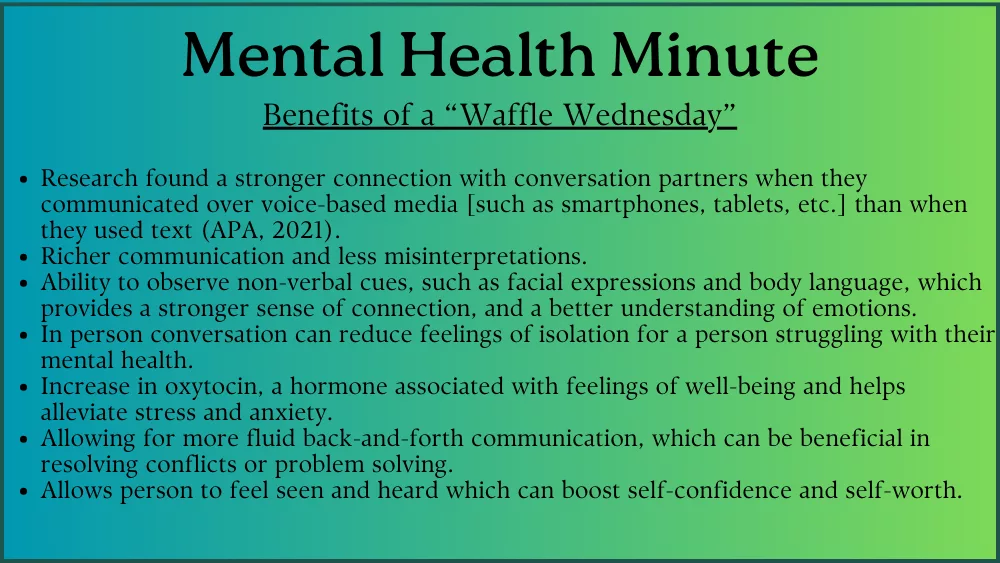
More on Wednesday Waffles
Updated Jan. 19, 2025.
What is a Waffle Wednesday? One might think that this implies that you eat waffles on a Wednesday. That might be true as well but in the last few weeks, I have learned it is a tradition that somebody started a few years ago to create a deeper and more meaningful connection with friends and family by sending a video to peel beyond a traditional exchange of question and answer around somebody’s state of being.
I came to know this term as a friend of mine and their family experienced a very traumatic event with tremendous ambiguity and uncertainty in the moments, days, and weeks to follow. This friend was out of the country and was rarely able to speak on the phone, so the primary extent of our communication was via text messages. This made it challenging to ascertain their emotional and mental state as it can be difficult to discern how somebody is truly doing or what they are implying when in a written form.
Enter my introduction to the Wednesday Waffle days into this experience, where my friend sent out a video titled as such. I had such immense relief being able to interpret the nuances as to how they were doing by listening to the intonation of their voice, seeing the expressions on their face, and it helped me to have a greater understanding of their emotional and mental space. It also enabled me to better calibrate how to support them and this provided immense relief.
We continue to exchange Wednesdays Waffles, and I look forward to utilizing this to provide deeper connection to other friends and loved ones. By taking a text message to ask how somebody is doing and expanding it into more meaningful conversation and connection can be an incredibly positive shift in reaching out to others.
I can appreciate that not everybody has the ability, or desire, to send a video text however it begs the question of how can we improve on how we connect with others? What are some other questions that we can ask that provide a greater understanding about another, what is going on in their lives, how they are actually doing, and how can we better show up for them.
I have to imagine that this will not only be beneficial to those we offer this to, but will be a advantageous for ourselves as well. In a world where it is easy to leave things at a typical exchange of pleasantries, can we find people that we want and need to show up for in a more intentional way? I began this wondering about the origin and purpose of a Wednesday Waffle and my only question left is, who do you want a Wednesday Waffle with?
Chresta Brinkman
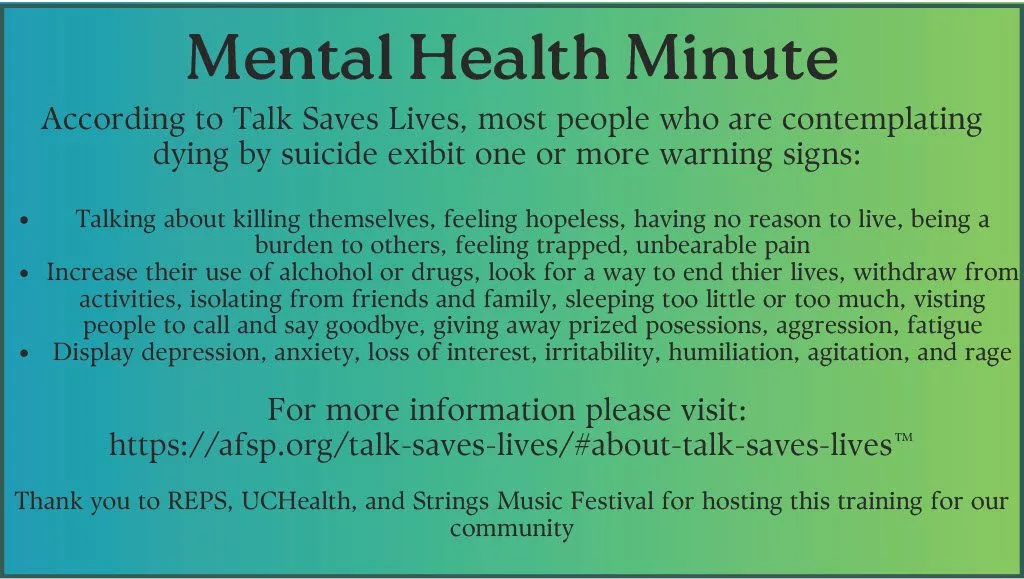
Updated January 12, 2025.
It was October of 1999, my brother, myself, and our close friend group headed out to our favorite camping location to rock climb and camp for the weekend. I remember the weekend vividly as we always had fun climbing and camping together. This was a group of friends that I have known most of my life. Brian was one of these friends and always had his life together. He was the one that was always prepared with some of the best gear and the most usable supplies that one of us almost always forgot to bring.
There was nothing during that weekend that made me feel something was going on with Brian. He was a successful college student going to school for engineering. He always had great grades and always invested in helping others out. I remember sitting in the back seat of the car talking with him on the way home from our camping weekend about what our futures looked like, and what we wanted to achieve in life. I remember him talking to me and giving me his support, telling me that I could do whatever I had set my mind to. Once we got back home and started unloading our gear, I remember him and the other guys making plans for the following weekend to get together at his school for a college game. That was the last time I saw my friend, Brian.
It was probably about three days after that camping trip that I had received a call from my brother. I knew in a moment from his voice, that something happened. The words came out,,, “Brian killed himself.” Silence…….all I remember was that moment of time stopping, feeling my heart beat outside of my chest. I couldn’t believe what I had just heard. Surely this is not true. There is no way that Brian would have done this. How could my friend, who had it all together, kill himself? He was only 24 years old.
The minutes, hours, and days were all in slow motion. I remember that following weekend being surrounded by the same group of friends as we tried to make sense of it all. WHY?? Why did he do it? What had happened? What did we miss? What did I miss in that last discussion? Why did this happen when he had made plans for the college game? WHY!!!
It’s been 25 years, and I still don’t know any of those answers. It has been hard to accept the unknown and difficult to wrap my head around what I could have done differently, or why we didn’t see any signs that he was struggling. What were the signs that we could have looked for such a successful friend? Was it the combination of his own expectations with other outside stressors that he felt he could not go on?
We will never know the answers to Brian’s pain, but what we do know is his death prompted us to live our lives to the fullest in Brian’s honor. We make sure to take time to enjoy life while checking in on each other and knowing that support is just a phone call away. Asking for help is not shameful, in fact it can strengthen friendships and normalize stress that others may be encountering.
The Talk Saves Lives presentation last week shared that some people are more at risk for suicide than others such as; Those who have mental health conditions, serious or chronic health conditions and/or pain, traumatic brain injury, access to lethal means, prolonged stress, stressful life events, exposure to another person’s suicide, previous suicide attempts, family history of suicide, and child abuse, neglect or trauma.
The Talk Saves Lives presentation hosted by Reaching Everyone Preventing Suicide (REPS) also encouraged others to watch for the warning signs of suicide where a person speaks of, killing themselves, feeling hopeless, having no reason to live, being a burden to others, feeling trapped, and unbearable pain. These words in addition to behavioral and mood signs can often be subtle, or no so subtle indicators that can signal a risk.
For more information visit https://afsp.org/talk-saves-lives/#about-talk-saves-lives™
https://www.nwcosuicideprevention.com/
Valery Lozano, MSFP, LPCC
Executive Director
Warhorse Ranch
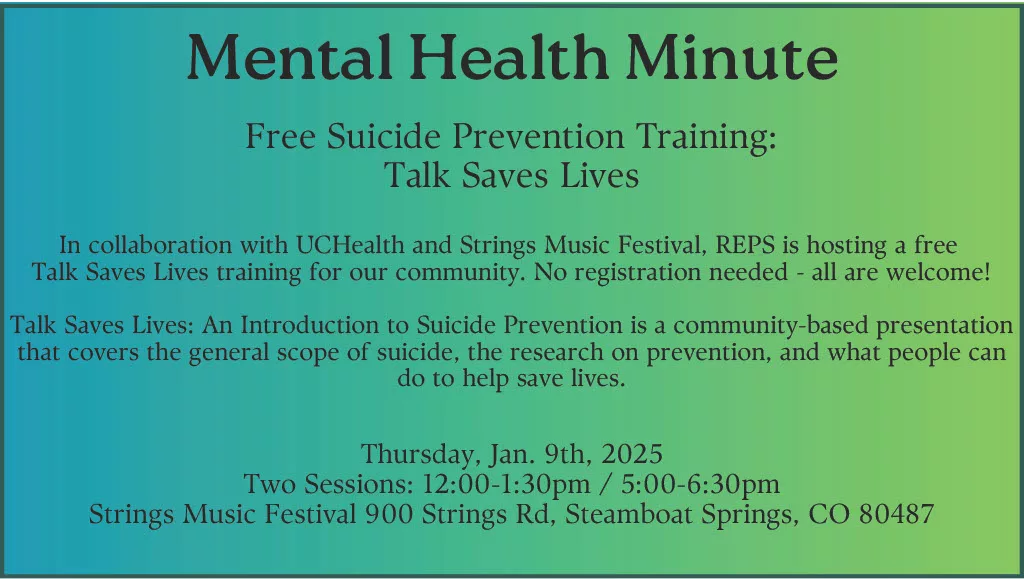
Jan. 5, 2025
Breaking the Silence: Encouraging Men to Reach Out for Help
By: Mindy Marriott
In today’s world, there is an increasing awareness of mental health and the importance of seeking support during challenging times. Yet, for many men, reaching out for help can feel like an uphill battle. Cultural norms, societal pressures, and internalized beliefs about strength and masculinity often create barriers that prevent men from speaking openly about their struggles. But here’s the truth: asking for help is not a sign of weakness—it’s an act of courage and strength.
Why Men May Struggle to Seek Help
Men face unique challenges when it comes to addressing mental health and emotional well-being. Many have grown up with messages that emphasize stoicism, self-reliance, and the need to “man up” in the face of adversity. These narratives can make it difficult to acknowledge feelings of vulnerability or to admit when something feels overwhelming.
Additionally, men may worry about being judged or misunderstood by others. They might fear that opening up could make them appear less capable or that their struggles will be dismissed. These fears, while understandable, can lead to a cycle of silence that only deepens feelings of isolation and distress.
The Power of Connection
It’s important to remember that no one is meant to go through life’s challenges alone. Just as a team works together to achieve success on the field, having support from others can make all the difference when navigating tough times.
Reaching out for help doesn’t mean you have to bare your soul all at once. It could start with a simple conversation with a trusted friend, family member, or coworker. Sharing what’s on your mind, even in small steps, can provide relief and open the door to additional support.
Breaking Down the Barriers
Here are a few ways we can collectively encourage men to seek help and create a more supportive environment:
- Normalize Conversations About Mental Health: Talk openly about the importance of mental health and well-being. When these conversations become commonplace, the stigma surrounding them begins to fade.
- Highlight Stories of Resilience: Share stories of men who have sought help and found hope. Hearing these narratives can inspire others to take that first step.
- Provide Accessible Resources: Make information about counseling, support groups, and crisis hotlines readily available. Sometimes, knowing where to turn is the first hurdle. 4. Offer Nonjudgmental Support: If someone in your life is struggling, let them know you’re there to listen without judgment. Your support can be a lifeline.
A Message of Hope
If you’re a man who’s feeling overwhelmed, know this: you are not alone. Reaching out for help is a powerful act of self-care that can lead to healing and growth. You deserve to feel supported, understood, and valued.
For anyone who has a man in their life—whether a partner, friend, brother, or colleague—remind them that it’s okay to not be okay. Let’s work together to break the silence and create a world where seeking help is seen as a mark of strength, not a sign of weakness.
Remember, there is hope. There is help. And there is healing.
Mindy Marriott is the Executive Director of Reaching Everyone Preventing Suicide
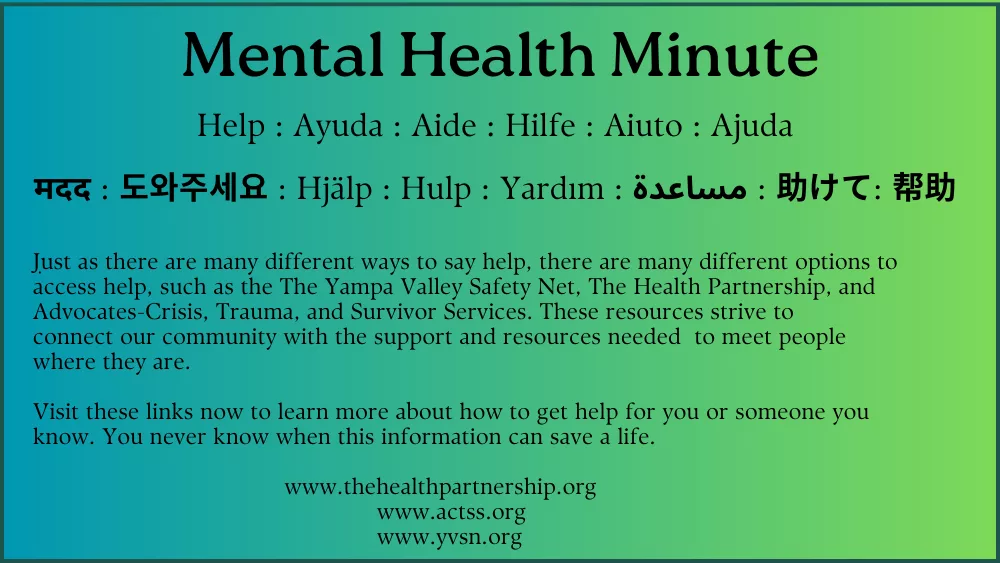
Dec. 28, 2024, is simply a graphic that there are resources for you and someone you care about.
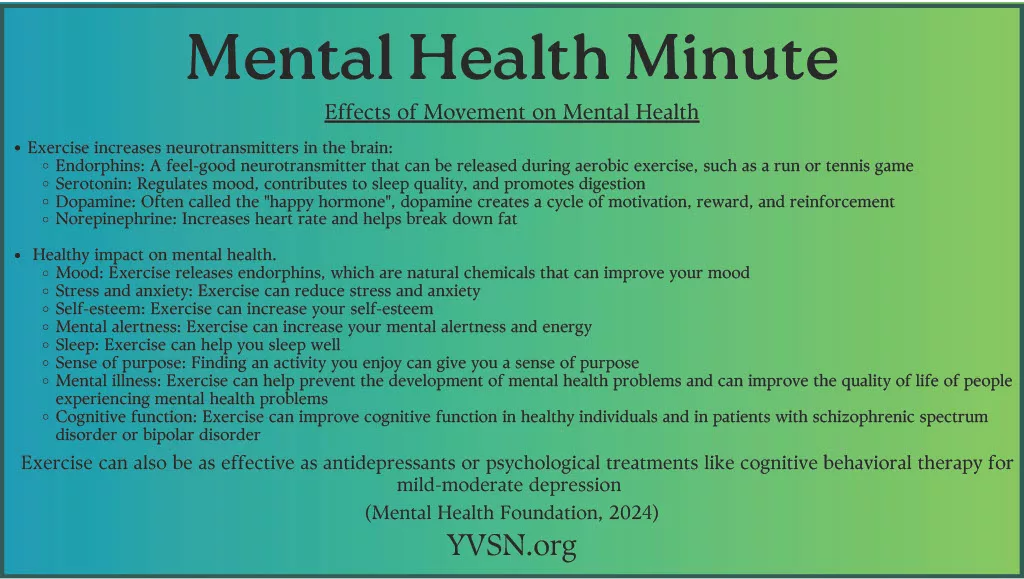
Finding Light in Movement: How Dance Helped Me and Can Help You — December 22, 2024
March 13, 1997 1:00 am
Come Death Come
Let me breathe you in like a breath of fresh air
For you are the comfort amidst my torment
You are the light at the end of my black tunnel.
I will never understand why life is so
Nothing but an endless spin of uncertainty and fall.
Hurdling me in and out of this bubble
Wondering if this world is reality or hell; or both.
But you, oh death, you tempt me with your ways.
You’re sly to urge, but beckoning me loudly
You’re out there waiting, waiting for me to give in.
To these fears, to this sadness, this hopelessness.
I am not strong, I am not good, I am not me. I cannot give in.
My love is everything I have and everything I have not. And what shall I hold onto?
The rain gets louder, the anger ferments in my stomach.
You are not alone and you know it.
I feel your claws clenched around my heart, is it hard to hold onto?
When you meet with my life, perhaps then I will find peace.
And perhaps then my story will be revealed.
I tried to end my life in college. I was lost in a cycle of depression, manic episodes, emotional pain, and numbness. My journal entries (as above) during that time were filled with references to rain, feeling trapped in a bubble—poetry about loneliness, hopelessness, and a constant questioning of my worth. I felt unseen, unheard, and unworthy. Over time, these feelings compounded. It’s that feeling you have when you’re about to break up with someone – the feeling of being “done” with the relationship. Only this break up was with myself. I crammed every single prescription and over the counter pill I had at my disposal into my mouth and called it a day. I wanted out. No more. Please, God, end it…
I lived. Somewhere in that experience, a voice inside me said no, you’re not done, you do have purpose. I began to realize that life (all life) is a miracle, and I wasn’t alone. My journey with depression did not end, but what shifted, however, was my perspective. I began to understand that pain, while excruciating, could be a teacher. Over time, I learned to face my depression not as an all-consuming force but as a part of me—a piece to acknowledge, manage, and learn from rather than something to define me. Pain, physical or emotional, is never stagnant…it always changes and moves; so it became about finding the tools to move through it.
One of the most profound tools in my healing process has been dance. Dance gave me an outlet for my pain when words felt inadequate. It allows me to move through emotions, physically release tension, and reconnect with my body when depression leaves me feeling disconnected. The rhythm and flow of movement, paired with music, provides solace. Numerous studies show that dance is a powerful tool for mental health, combining physical activity with emotional expression and social connection. Research shows that dance reduces stress, anxiety, and depression by releasing endorphins and lowering cortisol levels. Movement activates the brain’s motor and emotional centers, fostering improved mood and cognitive flexibility. Dancing in groups also strengthens social bonds, reducing loneliness and enhancing a sense of belonging. Creative expression through dance can help process trauma and regulate emotions, promoting resilience. These benefits make dance an effective and accessible therapeutic practice for mental health support.
Our community has been wounded by many suicides in recent years. These dig at my heart, which is, in part, why I’m sharing this story… and why I am so passionate about Steamboat Dance Theatre’s Dance Vitality program and mental health in general. This brand new program provides free therapeutic movement classes designed to help others in our community navigate their own struggles with mental health. Dance Vitality is about more than exercise—it’s about creating a safe space where individuals can process emotions, build connections, and rediscover joy in movement. Our program serves as a resource for anyone who might have struggles. It’s a reminder that healing isn’t linear and that we all need tools to help us move through life’s most difficult moments.
No matter where you are in your mental health journey, know that you are not alone. I am now beyond grateful for living through that experience, and if I can help even one person, then putting this out there is worth it. Through movement, connection, and support, there is light to be found. Whatever you do, just keep going. Let’s dance together.
Lori Biagi
Steamboat Dance Theatre
Executive Director
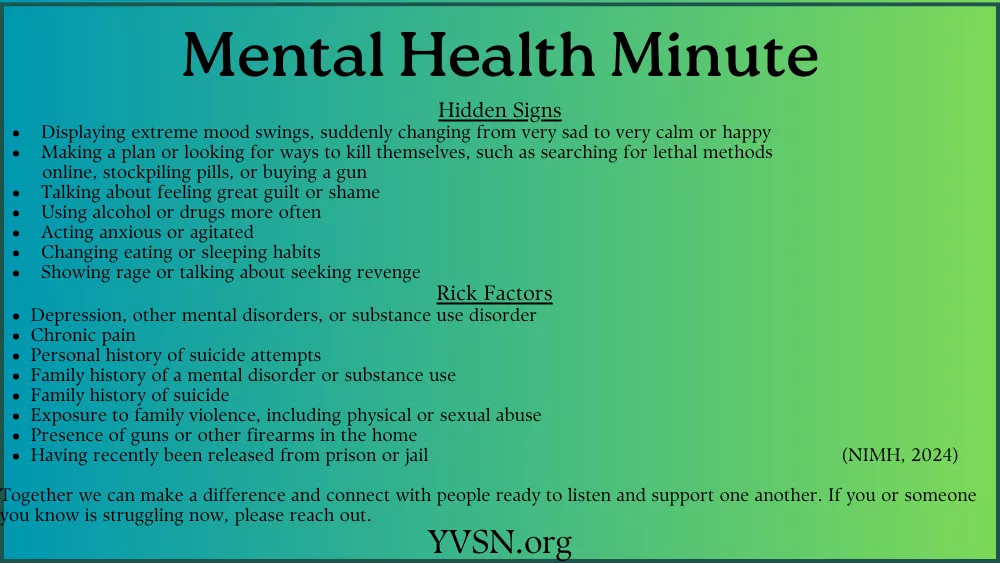
Posted Dec. 15, 2024 from Mental Health Minute contributors.
The antique clock methodically ticked at my grandparent’s house. The late hour meant the world was silent and I could sit and enjoy the reliably rhythmic pattern I always found so soothing as I was settling down for bed. Suddenly, I heard my grandparents’ phone ring. I popped up quickly to grab it before it woke them and prayed it wasn’t one of my friends calling at such a late hour. This was during the time before the common cell phone, and a land line was the only way for someone to reach me. My script was prepared to remind my friend not to call so late – the words on the tip of my tongue but instead of my friend, I was greeted by my uncle who asked me to sit down.
In a moment my world abruptly halted to a stop and the clock seemingly did as well. The only sound I could hear was the news that one of my beloved cousins had passed away and he had died by suicide. The details were swimming in my mind, wondering how I had just been with him and how did I not know he was suffering? I then braced myself for action, offering to make calls, tell my grandparents, figure out flights for others.
After completing these tasks, and a long shower in hopes of waking up from this experience that was so unfathomable that it must be a dream, I laid down on the couch. With this news, that calming rhythmic tick that lulled me into peace no longer offered solace but instead became an incessant drumming in my ears. As I tried to fall asleep, I grappled with so many questions. What were the signs of someone contemplating death by suicide? What could I have said? What didn’t I say? Did he know how amazing he was, that he lit up the world, that he was so loved and needed? Did he know we would never be the same without him regardless of how much time passed by? How did I not know, and how could I miss this? I wrestled with guilt, shame, shock, and fear and nearly 30 years later these questions tightly blanket the unimaginable heartbreak and complicated pain that stays with me still.
Back then we not only didn’t have cell phones, but the internet was a world away from offering resources and support for those who are struggling and those looking for ways to best support a loved one. I often wonder how having access to awareness around mental health as well as information on how to find connection and support for someone who is facing challenges would have made a difference.
I know I will not be able to change our loss and I know that nearly three decades later the ache of his loss remains in all of our lives. I wish I could hug him, tell him I love him, for my kids to be a part of his life, and that as impossible as it seems, it will get better, and he is not alone. The reality is that I can honor him by breaking the stigma of mental health by being a part of the conversation, sharing our story, and meeting people where they are to provide the supports they uniquely need.
Our community has many resources to address these needs and the continued effort to collaborate to strengthen and improve is happening daily. The Yampa Valley Safety Net www.yvsn.org is one such creation from these conversations as it aims to match people with what they individually need as well as help others to connect loved ones to support. This site will grow and evolve as it moves forward. Please take a moment to click on this link and see what our community has to offer. You never know when you may need this information for yourself or someone you care about.
That clock still echoes in my soul. Its drumming pushes me forward to do all that I can to show up for myself and others to let people know that they are not alone, and that there are people ready to meet them where they are with the support they need because they matter no matter what.
Chresta Brinkman
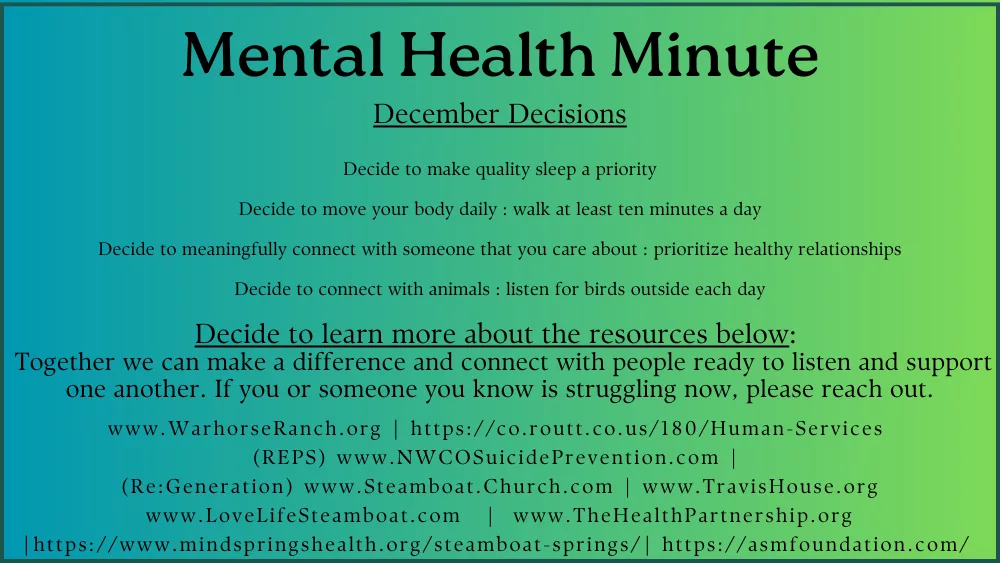
Posted Dec. 8, 2024, from Mental Health Minute organizers: Attached is a resource shared with us from Pete DePrez who is a Retired Law Enforcement Officer, and Coach/CEO of the ASM Foundation.
Humans Are Weird
I am one, I should know. I would like to point out some often misunderstood concepts of the human experience.
First, humans are essentially made up of three parts: the brain, the body and the consciousness. Each one of those elements hosts a myriad of systems within itself and if one of them is impacted by an outside force the entire ecosystem can be thrust into chaos-creating a host of problems known as mental health challenges.
Take for instance the brain. It is essentially the processor for the human experience. It has an amazing ability to regenerate throughout the entirety of a human’s life!! Most humans aren’t even aware of how their processor works or how to care for it. Which is an amazing testament to how well the system works, more often than not!
If their brain does malfunction it is imperative that the human become familiar with all the different modalities available to remedy the issue.
Psychedelic therapies, endocrine therapy, equine therapy, physical therapy (the brain doesn’t recognize the difference between physical & mental pain), RtMS (repetitive transcranial magnetic stimulation), Stellate Ganglion Block, yoga, EMDR, breath work, stem cells, meditation and many, many more methods exist for humans to find relief from symptoms and ultimately create a state of homeostasis within the processor. So, there are a lot of options and if a human isn’t aware of what options are available to them it can feel like shutting down the system for good is the only REAL option they have.
Humans need to maintain the body and mind on a daily basis through diet, rest, exercise and practices that help to regulate our nervous system. Exercise is the cheapest and easiest way to maintain our health. What a human ingests will largely determine how they feel. The brain will, more often than not, follow suit. Thirty seconds of cold water at the end of a hot shower will benefit the human body in a myriad of physiological ways and the challenge of forcing themselves into discomfort sets a standard that the human can build from, daily.
Humans take their first breath shortly after birth and must maintain breathing for the remainder of their life. It’s an action that is so automatic that most humans never take the time to consider if they’re doing it well or not! Learning to breathe as a tool to improve overall well-being is as easy as paying attention to breath. A human is capable of relaxing their entire being by simply inhaling through their nose for three seconds, holding the breath with their diaphragm for six seconds and then exhaling for nine seconds. The longer they repeat this cycle the more relaxed they will become. It’s like magic for their nervous system!
The easiest way to implement change is to begin now. Humans have an epic ability to change their reality at any given moment. Choose to live with gratitude. Do what you have to as a human to discover faith-something you believe in beyond yourself- and live for it. Humans don’t necessarily need religion; but it’s hard for them to live without faith. If you don’t know where to begin reach out to someone in the community and ask how. The first step is always the hardest and you’ve already taken it by reading this article. Don’t stop and for God’s sake never give up.
Pete DePrez
- Retired Law Enforcement Officer
- Coach/CEO ASM Foundation
- www.asmfoundation.com
Additional resources:
- REPS
- Routt County Department of Human Services
- Warhorse Ranch
- The Travis House
- Love Life
- The Health Partnership
- https://www.mindspringshealth.org/steamboat-springs/
- https://asmfoundation.com/
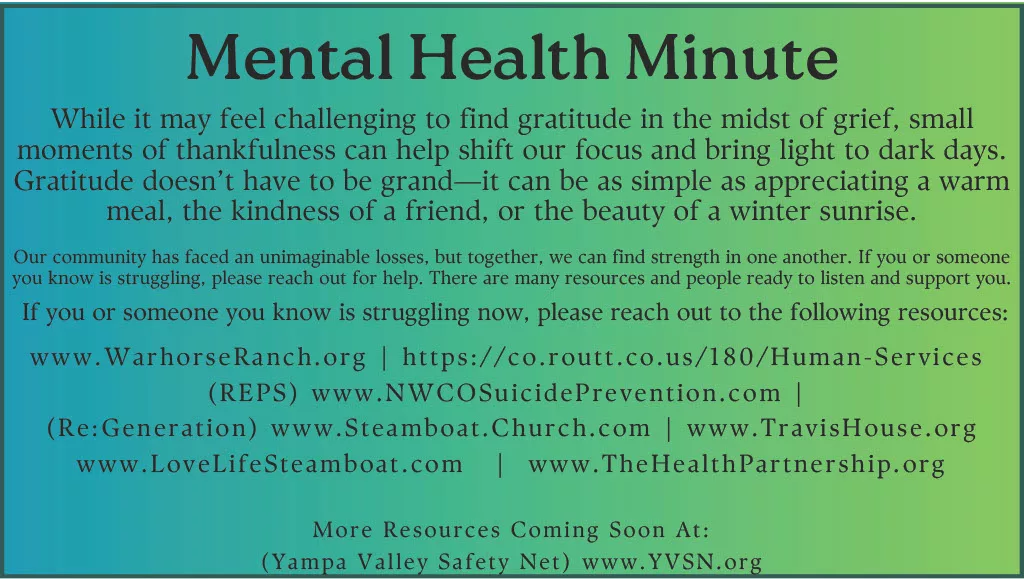
Posted Dec. 1, 2024
Finding Hope and Healing: Supporting Each Other Through the Holidays
By Mindy Marriott-Executive Director REPS
As the holidays approach, our community carries the weight of grief after losing 18 cherished lives to suicide. The season meant for joy, connection, and celebration may feel overwhelming for those navigating the pain of loss. But in these moments, we are reminded of the power of compassion, support, and hope.
Taking Care of Yourself
Caring for yourself during the holiday season is essential. Grief is complex and can feel even heavier during festive times. If you’re experiencing sadness, exhaustion, or isolation, know that these feelings are valid.
Here are a few gentle ways to prioritize your well-being:
- Set Boundaries: It’s okay to say no to gatherings or traditions that feel too difficult this year.
- Practice Mindfulness: Taking a few moments each day to breathe, reflect, or simply rest can help ease anxiety.
- Stay Connected: Reach out to someone you trust—a friend, family member, or a counselor. You don’t have to carry the weight alone.
- Honor Your Loved Ones: Create a personal ritual to remember those you’ve lost. Lighting a candle, writing a letter, or sharing a memory can bring comfort.
Checking In on Friends and Family
The holidays can be challenging for many, even those who seem to have it all together. Taking a moment to check in on others can make a world of difference.
A simple message or a phone call can open the door for meaningful conversation. Here are some gentle ways to check in:
- “I’ve been thinking about you. How are you doing today?”
- “The holidays can be tough. Would you like to grab a coffee or talk?”
- “You’ve been on my mind. Let’s catch up soon.”
Sometimes, just knowing someone cares can bring a sense of comfort and connection.
Finding Gratitude in Difficult Times
While it may feel challenging to find gratitude in the midst of grief, small moments of thankfulness can help shift our focus and bring light to dark days. Gratitude doesn’t have to be grand—it can be as simple as appreciating a warm meal, the kindness of a friend, or the beauty of a winter sunrise.
Consider starting a gratitude journal. Each day, write down one thing you’re grateful for, no matter how small. Over time, these moments of gratitude can offer a sense of peace and resilience.
You Are Not Alone
Our community has faced unimaginable losses, but together, we can find strength in one another. If you or someone you know is struggling, please reach out for help. There are resources and people ready to listen and support you.
We honor the lives of those we’ve lost by caring for ourselves, checking in on each other, and holding space for hope and healing.
This holiday season, may we lean on one another, find moments of gratitude, and remember that brighter days are ahead.
If you need support, please contact the National Suicide Prevention Lifeline at 988 for 24/7 support and see below for additional resources.
Together, we are stronger, and together, we can heal.
Additional resources:
- REPS
- Routt County Department of Human Services
- Warhorse Ranch
- The Travis House
- Love Life
- The Health Partnership
Posted Nov. 23

We are collaborating with different community groups to provide this information in the Moffat and Routt County communities.
Reach out because they will help. There is hope.
REPS – REACHING EVERYONE PREVENTING SUICIDE
Preserving, Protecting, & Promoting Life in the Yampa Valley
Available 24/7 in English and Spanish from anywhere in the United States.
Their website is nwcosuicideprevention.com
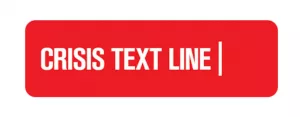
Available 24/7 in English and Spanish from anywhere in the United States.

Available 24/7 in English and Spanish from anywhere in Colorado.
If you are struggling, please reach out to any of the following:
- WarhorseRanch.org
- NWCOSuicidePrevention.com
- Steamboat.Church.com
- TravisHouse.org
- LoveLifeSteamboat.com
- TheHealthPartnership.org
- Yampa Valley Safety Net at YVSN.org (Coming soon)
- Routt County Youth Services Coalition with a Family Resource Guide
- Mind Springs Health
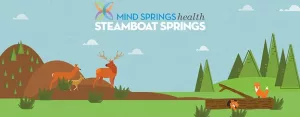
Mind Springs Health is at 407 South Lincoln Ave. in Steamboat Springs. To schedule an appointment: 970-879-2141.
